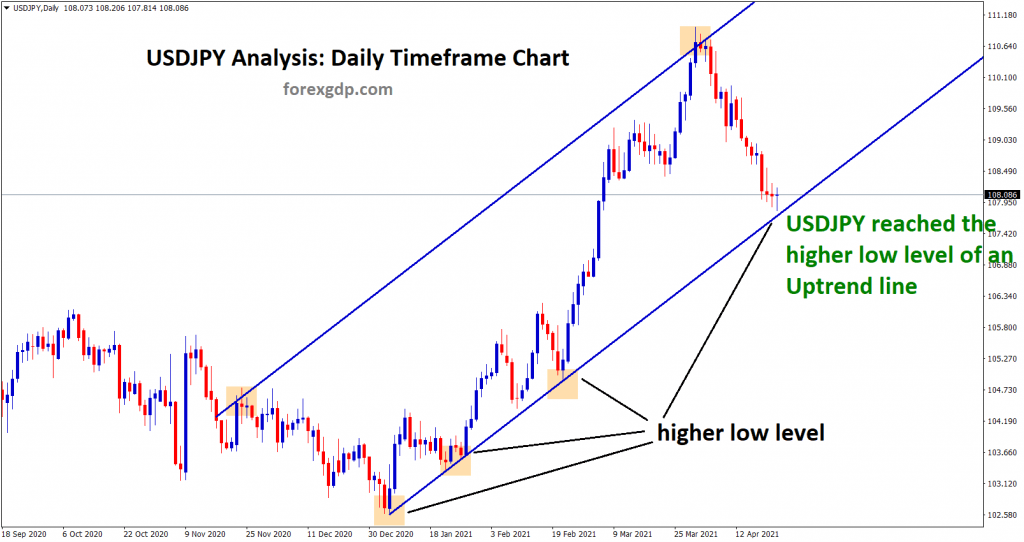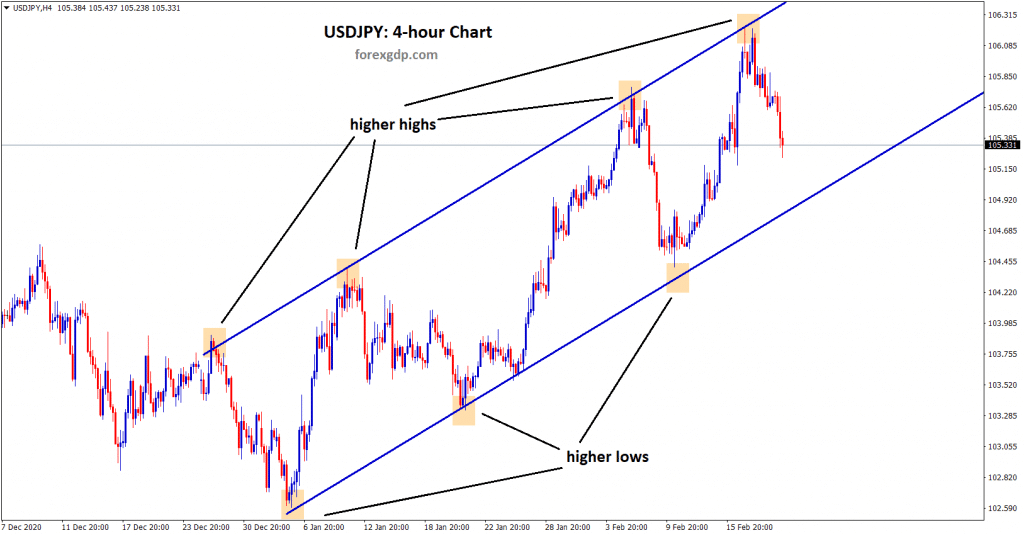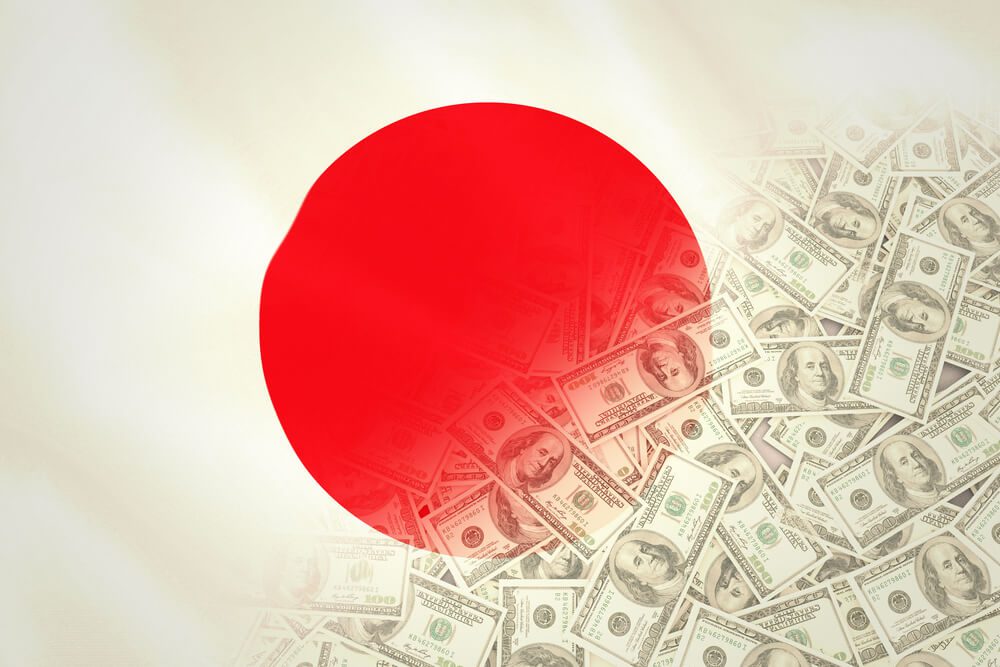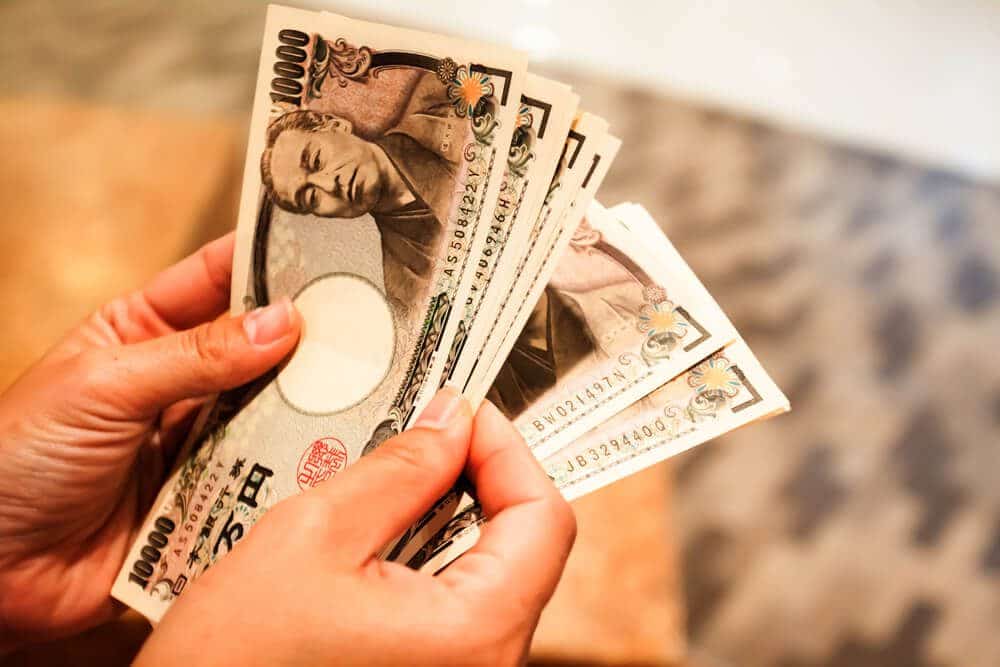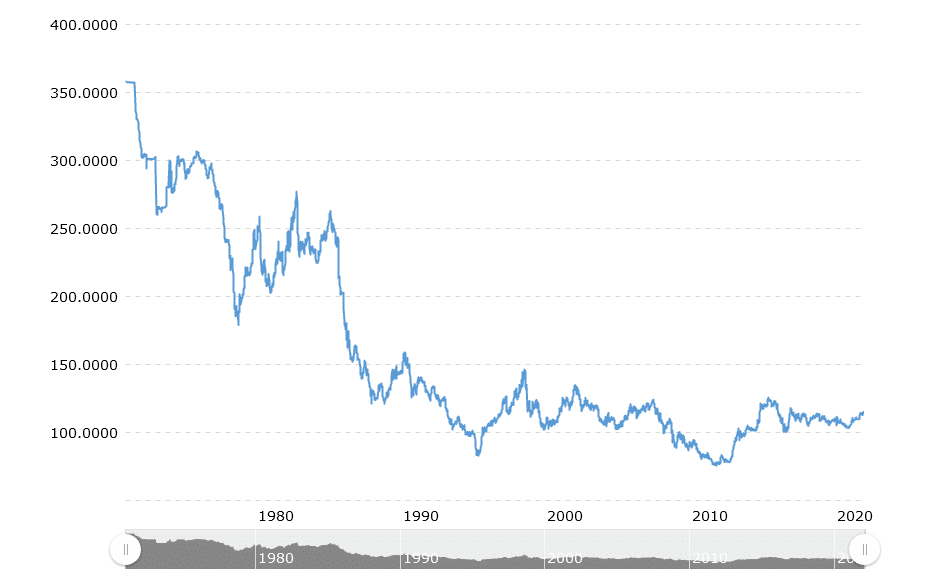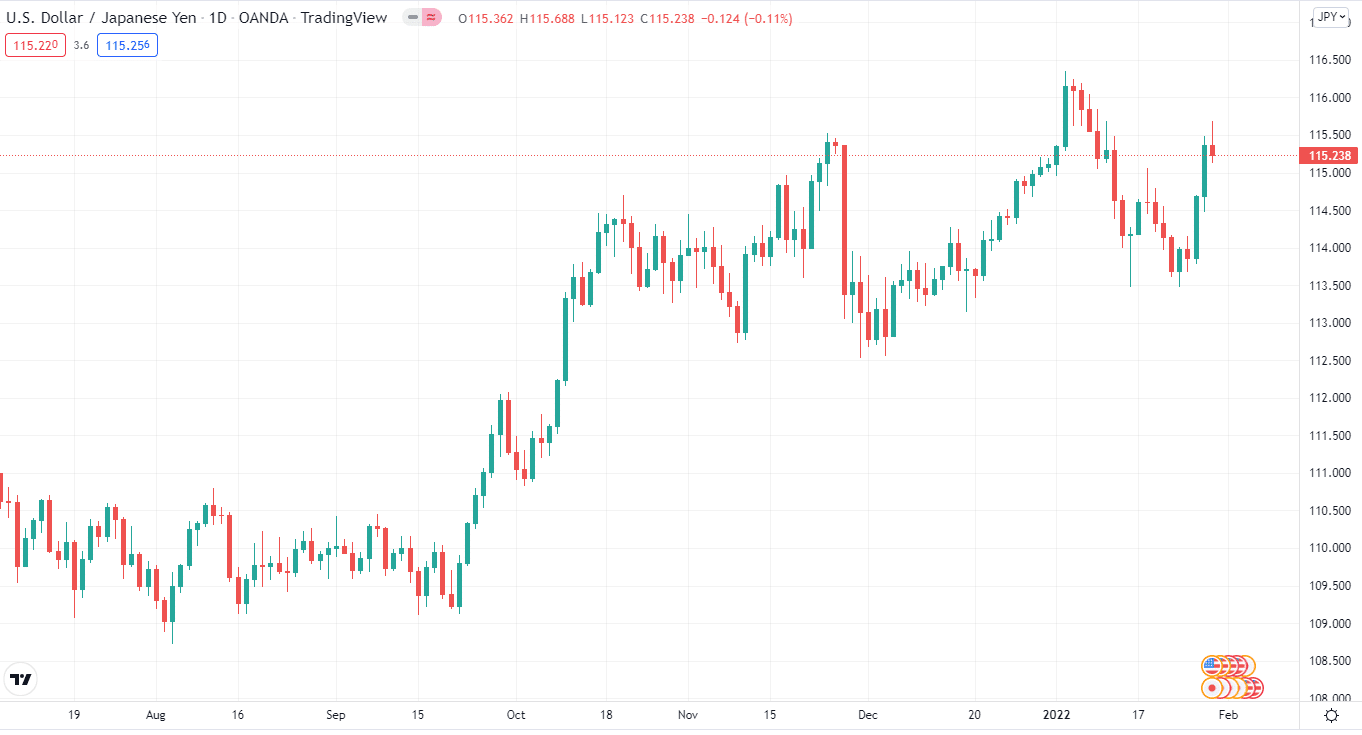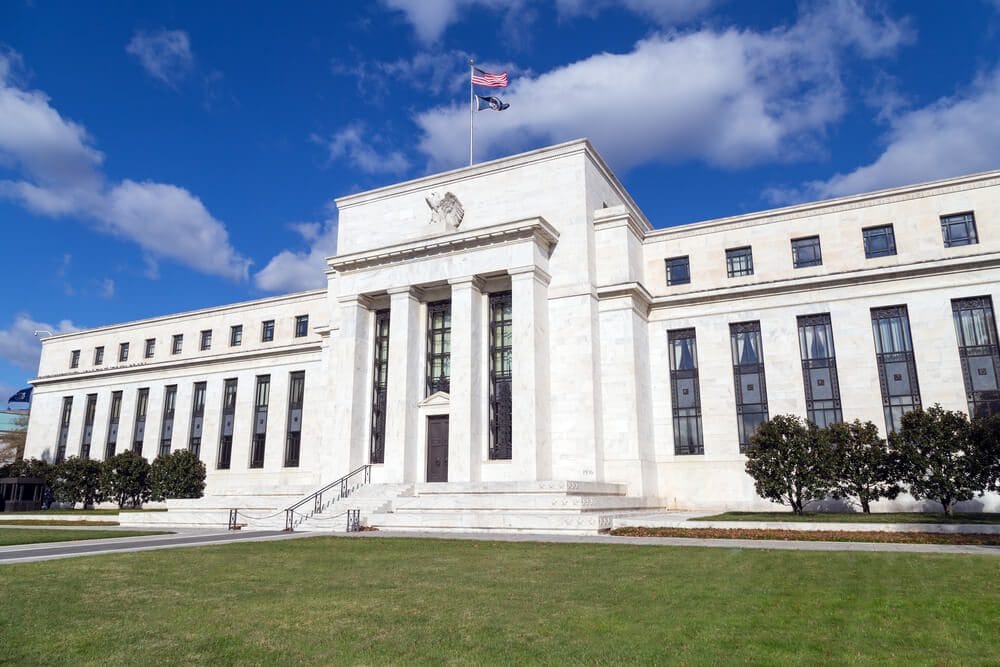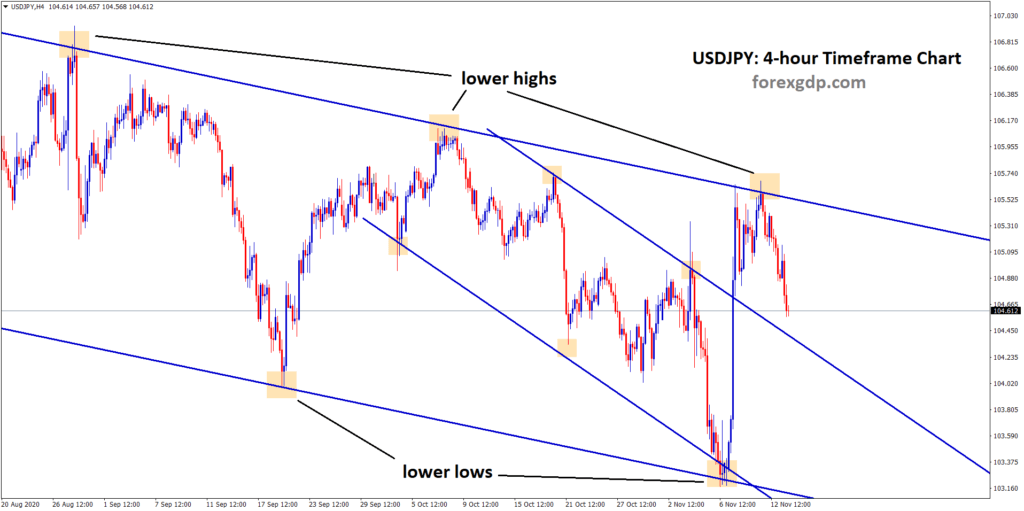Do you know USD/JPY is the second-most traded pair in the forex market?
It goes right below EUR/USD as the most traded pair.
But how come USD/JPY get a lot of eyeballs from traders? It’s simple!
USD is the most dominant currency, and JPY has its safe-haven tendencies. So, when they combine, they make a perfect duo.
In this guide, we’ll dig deeper into what USD/JPY holds and how you can trade it.
History of USD/JPY
Before doing any further, we want to give you a quick history lesson. So, let’s rewind the clock and talk about the history of both USD and JPY.
Following the ratification of the United States Constitution, Congress approved the Mint Act on April 2, 1792, which created the United States coinage system and the dollar as the primary unit of currency.
The Bretton Woods Agreement established the United States dollar as the world’s reserve currency, backed by the world’s greatest gold reserves.
The majority of the reserves are in cash or US bonds, such as US Treasuries. Outside of the United States, dollar-denominated debt is increasing.
The New Currency Act of 1871, enacted by the Meiji administration, established the yen as the Japanese monetary to stabilize Japan’s chaotic currency situation.
The currency has lost most of its pre-war worth since World War II.
Fun fact: The USD/JPY pair is called the Gopher. It is also referred to as the yen because of the Japanese yen.
Exchange rate history
Now that you know the history of both USD and JPY let’s find out their exchange rate history.
As discussed in the previous section, the Japanese yen has lost most pre-war value since World War II.
Therefore, as part of the Bretton Woods Agreement, the yen exchange rate was established at 360 JPY per 1 USD to balance the Japanese economy.
When the plan was abandoned in 1971, the yen’s value plummeted, and the currency was allowed to float.
The yen peaked at 271 yen per US dollar in 1973, then fell into a phase of deflation and appreciation due to the 1973 oil crisis, hitting 227 yen per US dollar by 1980.
The Plaza Accord of 1985 temporarily changed the situation by changing the exchange rate from 239 yen per US dollar to 128 yen in three years, from 1985 to 1988.
The Bank of Japan maintains a zero or near-zero interest rate regime, and the Japanese government has historically maintained a strict anti-inflation strategy. However, the surge of deflation was reversed during the 2008 Global Financial Crisis.
The Bank of Japan announced in 2013 that it would expand its Asset Acquisition Policy by $1.4 trillion over two years.
The BOJ aimed to pull the country out of deflation and expansion by targeting 2% inflation. However, the money supply was expected to double due to excessive sales.
Why is JPY so popular?
In the beginning, we mentioned that JPY has its safe-haven tendencies. This makes you wonder how come JPY is among the big boys.
Well, let’s see why:
Japan’s yen is the world’s third most widely used currency, after only the US dollar and the euro.
It is also the world’s fourth most popular reserve currency, trailing only the US dollar, euro, and pound. This is key because investors typically express their opinions on the Japanese yen when political or economic instability in Asia.
So, if breaking news produces a confidence crisis, there will be significant movements in Japan’s currency, even though the problems are not in Japan.
However, an essential feature of the Japanese yen is its long history of zero interest rates.
Japan’s zero-interest-rate policy has also made the Japanese yen one of the most preferred financing currencies.
The exceptionally low cost of borrowing in the yen makes it an appealing vehicle for funding currency purchases and, as a result, investments with higher interest rates and returns.
It was such a popular financing currency among institutional and individual investors that some said it had a significant influence in the Great Recession of 2008.
How to trade USD/JPY?
To trade USD/JPY, you need to open an account with the broker, deposit funds, and select USD/JPY as your pair.
In all forex pairs, currencies are quoted to four decimal points like EUR/USD as 1.1400. However, a pip is only two decimal places in yen currency pairs, or 0.01.
Let’s give an example of how you can trade the pair.
Suppose you short (sell) USD/JPY at 113.05. Then, the market starts moving in your direction, and the USD/JPY rate becomes 113.10. So, you make a cool pips profit.
Let’s say the market doesn’t go in your favor and starts dipping, and the rate becomes 113.00. In this case, you lose five pips.
Factors affecting USD/JPY
There are a lot of factors that can affect the Gopher. Knowing them will help you understand the pair better and make your trading positions accordingly.
Central Bank decisions
Each economic zone has a central bank that determines interest rates for its currency. For example, the Federal Reserve sets interest rates for the US dollar, whereas the Bank of Japan does it for the Japanese yen.
When two currencies, such as the USD and JPY, form a pair, the difference between their interest rates is known as the interest rate differential, and it is one of the key variables influencing the pair’s price movement.
Central banks are also in charge of monetary policy, which impacts the USD JPY exchange rate, apart from interest rates. Inflation rate decisions, money flow decisions, and quantitative easing are examples of such policies.
US stock markets
Inverse correlations exist between the US stock markets and the USD/JPY. When stock markets climb, bond prices fall, yields rise, and the USD/JPY is frequently sold owing to the possibility of better returns for the risk taken.
It’s also worth noting that though the USD/JPY pair trades in Asia, the same bond, stock, and dollar correlations apply as they do in the United States (JGBs).
When JGB prices fall in Asia trade, the USD/JPY falls as well, implying that bond yields and the Japanese stock market are rising.
US Treasuries
The USD/JPY currency pair has historically been linked with US Treasury bonds. Therefore, when the price of Treasury bonds, notes, and bills rises, the USD/JPY falls.
The idea behind investing in this currency pair is that the United States will never default on its bond payments, giving a stable, safe-haven status and eventually converting this allocation into a long position.
Furthermore, when interest rates rise throughout a trading day or are expected to rise in the future, Treasury bond prices fall. This strengthens the US currency and, as a result, the USD/JPY price.
USD/JPY correlation
The USD/JPY positively correlates with the USD/CHF because, aside from utilizing the US dollar as the base currency, the Swiss franc is the other currency that investors see as a safe haven.
On the other hand, the USD/JPY is inversely tied to gold. As a result, gold prices rose when the USD/JPY plummeted throughout the crisis.
What’s the best time to trade USD/JPY?
The chart below illustrates the forex trading sessions. The best time to trade USD/JPY is 1200 to 1500 GMT.
If possible, trade the USD/JPY between 12:00 and 15:00 GMT. For the most part, London and New York will be open at this time. Therefore, even though Tokyo is closed, this three-hour session often contains the greatest price movements of the day. Trade USDJPY mostly at UK trading hours for better volatility in Japanese yen currency pairs.
This means more profit possibilities, as spreads are normally at their narrowest around this period.
Strategies for USD/JPY
USD/JPY gets significant trading volume throughout the trading day. If you want to trade the Gopher, you have to prepare as a trader. Here are some of the strategies you can apply:
Carry trade
Buying a high-yielding currency against a low-yielding currency is an example of the carry trade. The carry trade attempts to profit from the differential in interest rates.
There are two forms of carry trade: positive and negative.
You buy high-interest-rate currency against the low-interest-rate currency when you have a positive carry. On the other hand, negative carry permits you to buy at a low-interest rate against a high-interest rate.
Carry trading works well with USD/JPY because the JPY has a low-interest rate, and the USD has a high rate.
As a result, you may easily swap the pair. In addition, carry trading strategies work perfectly when the overall market picture is bullish.
Arbitrage
The concept behind forex arbitrage trading is to buy and sell currencies with varied prices but eventually converge.
Arbitrageurs are those who use the arbitrage method.
An arbitrageur expects the price to revert to its mean, allowing them to exit the profitable trade in seconds.
The currency market is decentralized. As a result, the USD/JPY quoted in one location may differ from the price.
When the arbitrageur is aware of the situation, they buy at a lower price and sell at a higher price.
For example, suppose the Bank of Japan quotes the price at 113.20, and the Bank of America quotes it at 113.22.
An arbitrageur would sell at the listed price of Bank of America and buy at the reported price of Bank of Japan.
Price action
The features of USD/JPY price swings are described by price action. Therefore, this movement is frequently evaluated by recent price movements.
Price action is a trading approach that allows a trader to read the market and make subjective trading decisions based on previous and real price movements rather than merely on technical indicators.
To determine the trend’s direction, keep an eye on the “swing highs” and “swing lows,” or the duration of the trending and pullback waves.
The rules of an uptrend are that the price makes higher swing highs and lower swing lows. During a decline, the opposite is true.
A price chart shows trendlines’ troughs, and peaks hover between support and resistance lines.
What trading style mostly suits USD/JPY?
Now that you know which strategies are suitable for USD/JPY, let’s find out which trading style suits the pair:
Scalping
Scalping is a trading method with the shortest trading cycle; shorter even than other kinds of day trading. It acquired its name from traders who utilize it, known as “scalpers,” who enter and exit the market fast to make tiny profits on a high number of deals throughout the trading day.
They intend to make enough of these tiny deals to equal the profit they could have gained from a larger trade one day.
Day trading
Day trading is ideal for traders who wish to start and finish a task on the same day. That’s you if you start painting your kitchen and won’t stop until the task is done, even if it means staying up till 4 a.m.
Many day traders would never engage in swing or position trading. They would be unable to sleep at night if they knew they had an active trade that price swings may influence during the night.
Additionally, there are differences amongst day traders. For example, someday, traders prefer to make many trades during the trading day. Still, others prefer to wait for the optimal trading opportunities and may only make one trade every day.
Swing Trading
Swing trading is ideal for those who can wait for trade but want to benefit quickly after entering it. Swing traders nearly often keep their positions overnight.
If you’d be nervous holding a trade when not in front of a computer, this isn’t the technique for you. Swing trading often necessitates a higher stop-loss than day trading. Therefore, it is vital to maintain your cool when a trade goes against you.
Final thoughts
So that was all about the USD/JPY.
Remember that USD/JPY is a high volatile pair. So, if you are looking to trade the pair, follow the factors that can affect its movement.
Most common questions asked by the forex traders about USDJPY :
USDJPY is trending now between these price levels. check here the live chart analysis.
US market session is good for trading USDJPY with better volatility move.
USDJPY market is more active in Asian trading hours and US trading hours. these are the best time to trade USDJPY pairs.
The Successful trader provides signals with proper entry price, stop loss and take profit with good trade opportunity chart analysis and the clear trade ideas behind it. Forex GDP helps you to get free forex signal with all signal features.
Yes, USDJPY and gold has negative correlation. when USDJPY rises, Gold price falls down.
No, USDJPY moves faster during the US and Asian session. Average daily movement is 40 pips.
In trading view, doing your own analysis is good instead of following other traders USDJPY forecast who uses different strategies like Elliott wave analysis, price action. Watching USDJPY historical data charts from tradingview.com is helpful for looking the market in a long term view.
USDJPY Trading Signals
Check Full Forex Market Signals with Technical Analysis Chart
Please note : It is better to do nothing instead of taking wrong trades, we focus on providing you the forex signals only at good trade setup.
Each trade signal given to you with fundamental and technical analysis chart which helps you to understand why our analyst team has given the Buy signals and Sell Signals. Now, you can trade with confident using our service. Sounds good? Let’s look out all our signal charts below.
If you want to test our forex signals, Try free plan (or) if you need more forex signals, Join here for Premium or Supreme plan
Check all our signal results and some of the subscriber’s Myfxbook results here. Try our free service now, let the results speak the rest.
